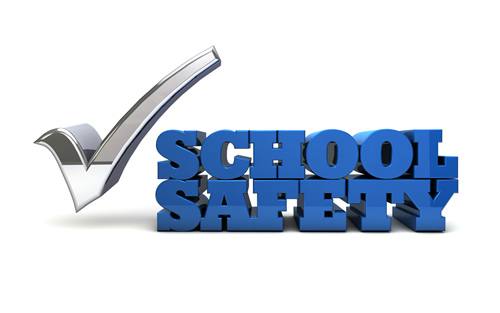It can be difficult for schools to focus on education when threats of violence loom, but continuing campus incidents like Parkland and Sandy Hook have unfortunately made fear of future tragedies an ever-pressing concern for communities across the country. In the wake of these crises, administrators have been left grappling for new school safety solutions that, if they will not prevent such tragedies in the first place, will at least keep them from enacting irreparable damage.
Choosing a solution that only serves one purpose can be just as irresponsible as not choosing one at all. While active shooters are top of mind, other threats – such as bullying, drugs or medical incidents – also need to be dealt with and addressed swiftly.
Related content: The constant quest for school safety
While simply having a school safety solution of some kind in place offers peace of mind, the right technology investments can tackle both dangerous threats while also managing day to day incidents, making them invaluable tools for schools and communities.
Here are two examples of technologies that often go above and beyond their original purposes.
Panic button applications
Panic button applications are safety technology that can provide immense value beyond their intended purpose. Most often associated with Alyssa’s Law in New Jersey and similar legislation in other states, panic button applications can facilitate emergency communications and expedite response.
While immeasurably valuable in active assailant scenarios, panic buttons can act as a real difference maker in saving students’ lives in any given emergency, which is why schools should consider options that address all types of emergencies, rather than those for just active assailants. In critical situations where time is of the essence – for example, a medical emergency – school administrators would then be able to activate a response to give dispatchers their exact location and, in some cases, information on what type of emergency they should expect – all with the press of a button.
While a variety of panic buttons exist, schools looking to maximize the effectiveness of their investment should opt for a digital or mobile panic button as opposed to a stationary panic button. While stationary panic buttons were at one time helpful, they are often placed in just one area, and generally alert a third-party alarm company that there is some sort of “panic” event without providing details like who is in need of assistance and the type of emergency. Even more dangerous, because these alarms don’t go to 9-1-1, major delays can occur if responding to emergencies. Other options, such as an app-based button that can be brought with teachers and administrators to lunchrooms, hallways or recess, make the button more practical for everyday use.
Anonymous tip lines
According to the Secret Service National Threat Assessment Center, 84 percent of attackers in school shootings share their plans to commit violence with at least one other person ahead of time, which means that in many cases, there’s the opportunity for officials to proactively intervene before those plans are put in motion. In these circumstances, anonymous tip lines allow students who may possess critical information to report threats of violence without fear of identification from their peers (which may otherwise inhibit them from speaking up).
Those who use this tool have often seen benefits beyond reporting school safety threats. According to a recent NBC report, most tip lines that were put in place to prevent school shootings have actually been used more frequently to report self-harm and suicide threats. In fact, the report reveals that threats of violence against schools tend to be the least reported kind of tip.
Beyond immediate safety threats, tip lines give community and school administrators valuable insights into other harmful situations, such as bullying, drug use, sexual harassment, hazing or other things that may otherwise go unnoticed. By providing officials with information on these issues, schools can address them as appropriate and ensure a better, safer learning environment.
It can be challenging deciding which school safety technology to invest in—but it’s also important to remember that safety in schools can take many different forms. To maximize community safety investments, administrators should look towards technologies that offer multiple invaluable functions – like anonymous tip lines or panic button applications – to prevent violence and create safer environments for students.
- High school students say AI will change the workforce - April 18, 2024
- Motivating students using the Self-Determination Theory - April 17, 2024
- Michigan Virtual’s statewide workgroup releasing AI guidance for K-12 educators - April 17, 2024


